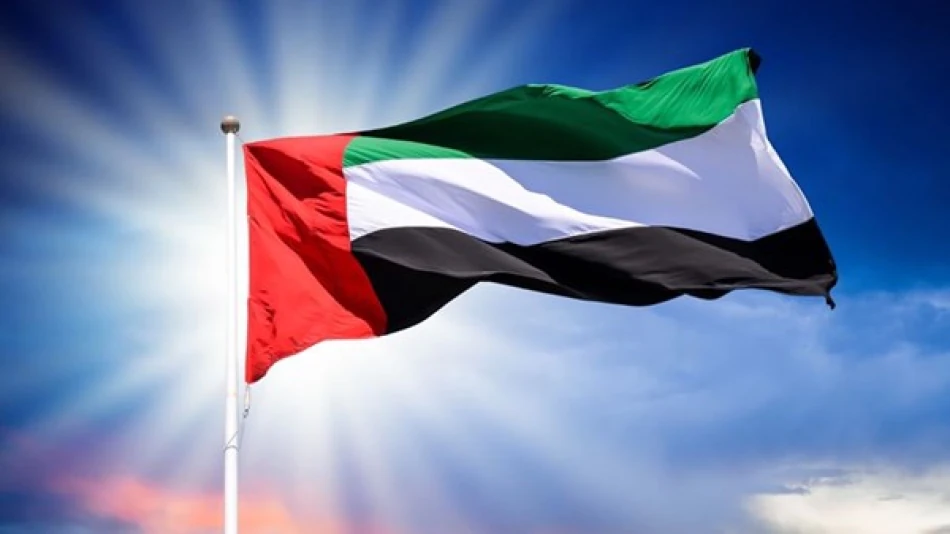
UAE Celebrates Flag Day, Renewing Allegiance to Leadership and Nation
Every November 3rd, the UAE comes together for Flag Day, a national celebration that brings millions of people to raise the flag at exactly 11 AM. This year marks another moment where government buildings, schools, universities, and private companies across all seven emirates participate in a synchronized display of national unity.
Flag Day coincides with the anniversary of the late Sheikh Khalifa bin Zayed Al Nahyan's ascension to power. But this isn't just a ceremonial event. It represents something deeper - a renewal of commitment to the values that built the UAE and a reminder of the unity that brought seven separate emirates together under one flag.
The UAE flag first flew on December 2, 1971, when the late Sheikh Zayed bin Sultan Al Nahyan raised it to mark the birth of the federation. That moment created the official symbol that would represent the new nation in international forums and embody the hopes of its people. The flag became more than fabric and colors - it became a symbol of peace, security, and the happiness that defines major national celebrations.
**The world's first Flag Day**
Here's what makes this interesting: the UAE was the first country to create a dedicated Flag Day celebration. Other nations have since followed this model, making the UAE a pioneer in this type of national observance. The event serves a practical purpose too - it helps younger generations understand the importance of national identity and builds loyalty among citizens and residents alike.
The celebration creates a unified national scene. Federal and local institutions organize special events including flag-raising ceremonies, national anthem performances, cultural parades, and artistic shows for children and youth. On this day, flags fly above ministries, public buildings, squares, and plazas, turning the entire country into a canvas of national colors.
**What the colors mean**
Each color on the UAE flag tells part of the story. White represents good deeds and giving, plus the country's commitment to supporting global peace and security. Green symbolizes growth, prosperity, environmental consciousness, and the nation's civilizational progress. Black represents the strength and resolve of UAE citizens and their rejection of injustice. Red honors the sacrifices of previous generations who established the federation and the martyrs who died protecting the nation's achievements.
The flag's design is straightforward: it's rectangular, with width equal to half its length. A vertical red section takes up one quarter of the flag's width on the side closest to the pole. The remaining three-quarters consists of three equal horizontal stripes - green on top, white in the middle, and black on the bottom.
**Towering symbols across the emirates**
Each emirate has built impressive flagpoles that serve as landmarks. Abu Dhabi's pole reaches 123 meters high along the Corniche, flying a flag that measures 30 meters long and 15 meters wide. Dubai's flag flies 120 meters above the Union House, the building where the UAE's formation was announced. Sharjah's Flag Island features a 123-meter pole, while Ajman, Fujairah, Umm Al Quwain, and Ras Al Khaimah each have 120-meter flagpoles in prominent locations.
The legal framework around the flag reflects its importance. Sheikh Zayed established Federal Law No. 2 on December 2, 1971, specifically about the UAE flag. The Cabinet later issued Decision No. 5 in 1996, creating detailed rules for how individuals and institutions should handle the flag according to proper protocols.
This annual tradition reinforces the bond between leadership and citizens while celebrating how far the UAE has come since 1971. The synchronized flag-raising creates a moment when the entire country pauses to acknowledge its shared identity and common future.
Most Viewed News

 Layla Al Mansoori
Layla Al Mansoori






